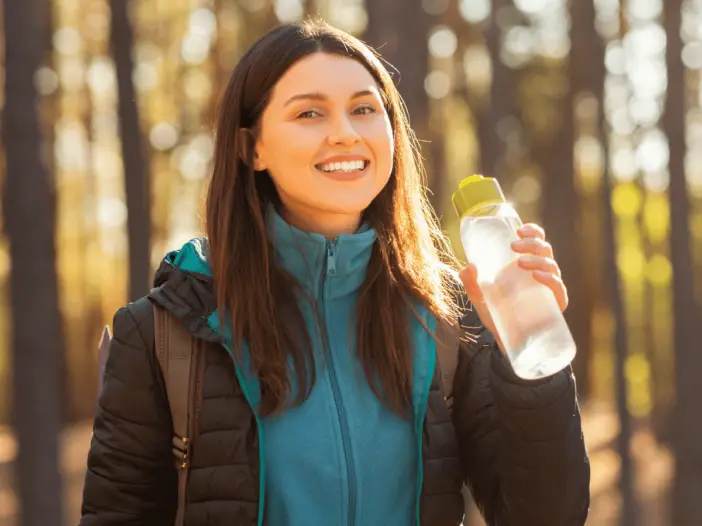
Hiking Basics
Discover the best way to carry water while hiking. We cover the variety of water carrying methods and the pros and cons of each, so that you can choose the most appropriate option for you
Discover the Best Way to Carry Water While Hiking
Getting to enjoy a hike in the great outdoors can help you shake off any stresses from your workweek. However, to enjoy it fully, you need to prepare appropriately.
That means staying nourished and hydrated. Getting dehydrated on a long hike is dangerous. That is why it is so important to carry enough water with you to last for your hike.
Here, we address how to figure out how much water you should carry and carrying options. If you are backpacking or going on very long, challenging hikes, you might not be able to carry water for the whole trip. We help you solve this hydration problem as well.
Ways to carry water while hiking
Dehydration can set in quickly when you physically exert yourself. It quickly leads to exhaustion and even heat stroke. Just one liter of water weighs 2.2 pounds (1 kg).
However, adding a couple of pounds to your pack is worth it. Figure out the best option for you to carry your water while hiking by going through the options below:
Carrying water in a backpack
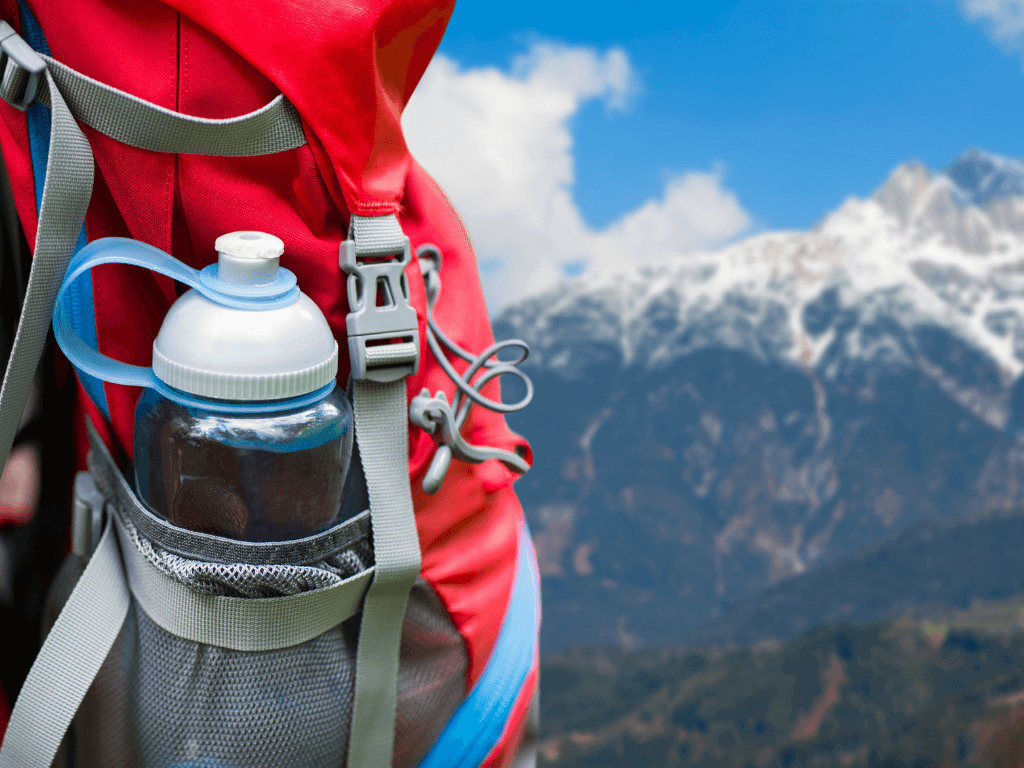
There are essentially two options when it comes to staying hydrated on your hiking trip. You can carry your water in your backpack, or you can fill reservoirs as you go.
Carrying water in your backpack means you have it with you even if there aren’t other water sources nearby. Unfortunately, it also means adding that extra weight to your pack.
Often, you will stay more hydrated if you have it with you. Here are the best options for carrying your water with you, whether it’s in a water bottle or a reservoir.
Rigid Water Bottles
Rigid water bottles are the standard water bottles we think of for carrying water even outside of a hiking scenario. They are often made from plastic or metal. Some are very sturdy, while cheaper products will break easily and are unsuitable for hiking trips.
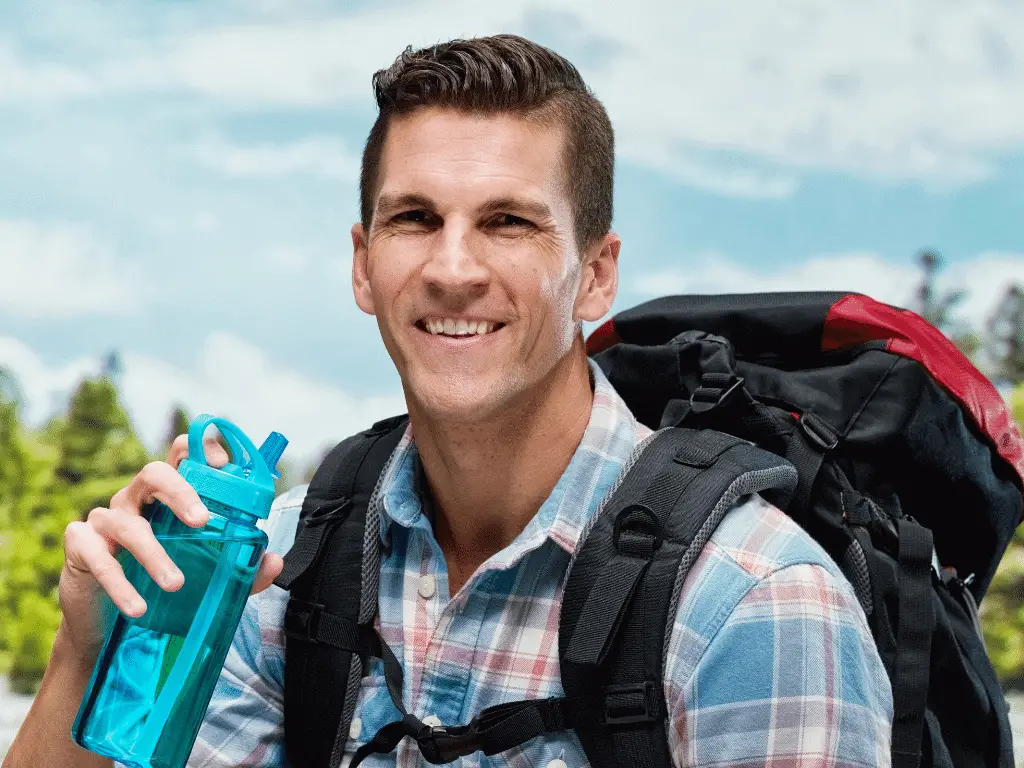
One positive aspect of a rigid water bottle is its build allows them to stand upright. As a result, you can easily slide them into your backpack. Their volume normally ranges from one to three liters.
The drawback of a rigid water bottle is that it can be difficult to pack. The plastic or metal build is also slightly heavier than the other options.
They also don’t collapse down as you drink them, meaning that a liter bottle will continue to take up a liter of space even when there’s no water left for you.
Hydration Bladders/Reservoirs
Hydration bladders are one of the most convenient choices for hikers. That is because even though you carry it in your backpack, they have a tube and mouthpiece so that you can drink from them while walking. It turns out that convenience is one of the keys to staying hydrated.
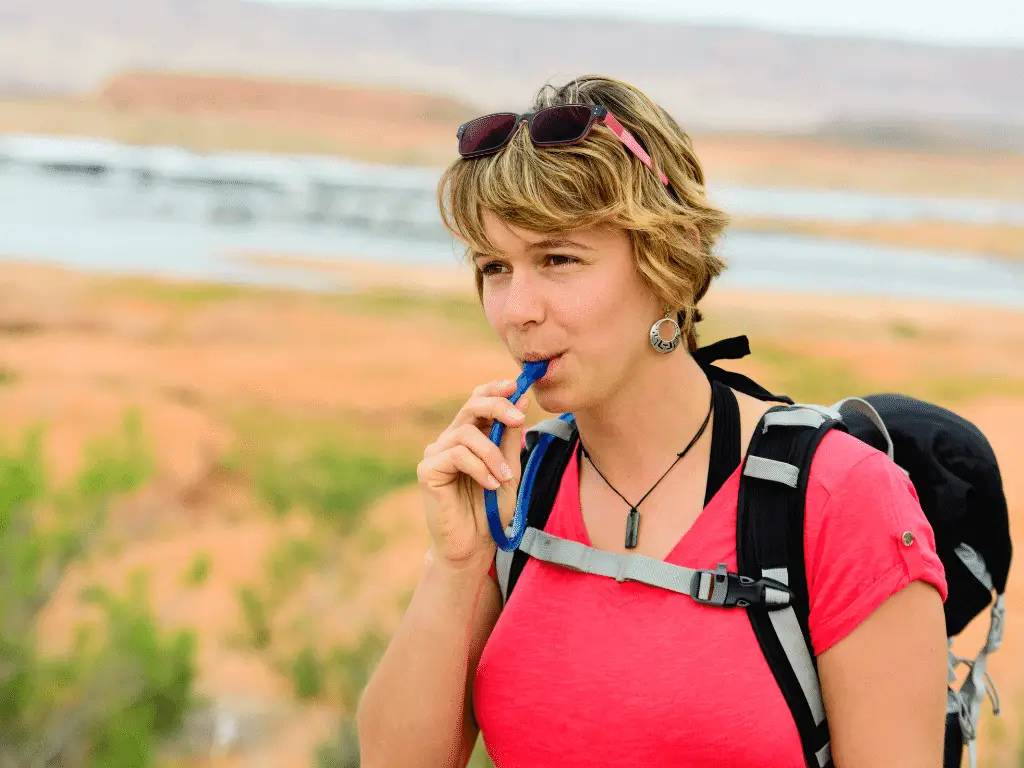
The most significant negative aspect of a hydration reservoir is its extra parts and joints. These will eventually result in leaks as the hose connections break down or come loose. Hydration bladders are especially susceptible to breakages since they tend to be only thin plastic.
So although they are convenient, light in weight, and shrink while you drink but do have some downsides.
Collapsible Water Bottles
Collapsible water bottles combine a rigid water bottle with a reservoir. They weigh less than a rigid water bottle but have the convenience of being handheld, unlike a hydration bladder. These usually don’t come in substantial sizes, typically ranging between one and two liters.
The downside to these is very similar to the hydration reservoir. They are not as durable as rigid water bottles. They often end up breaking after several months of hard use.
Filling water from rivers & streams
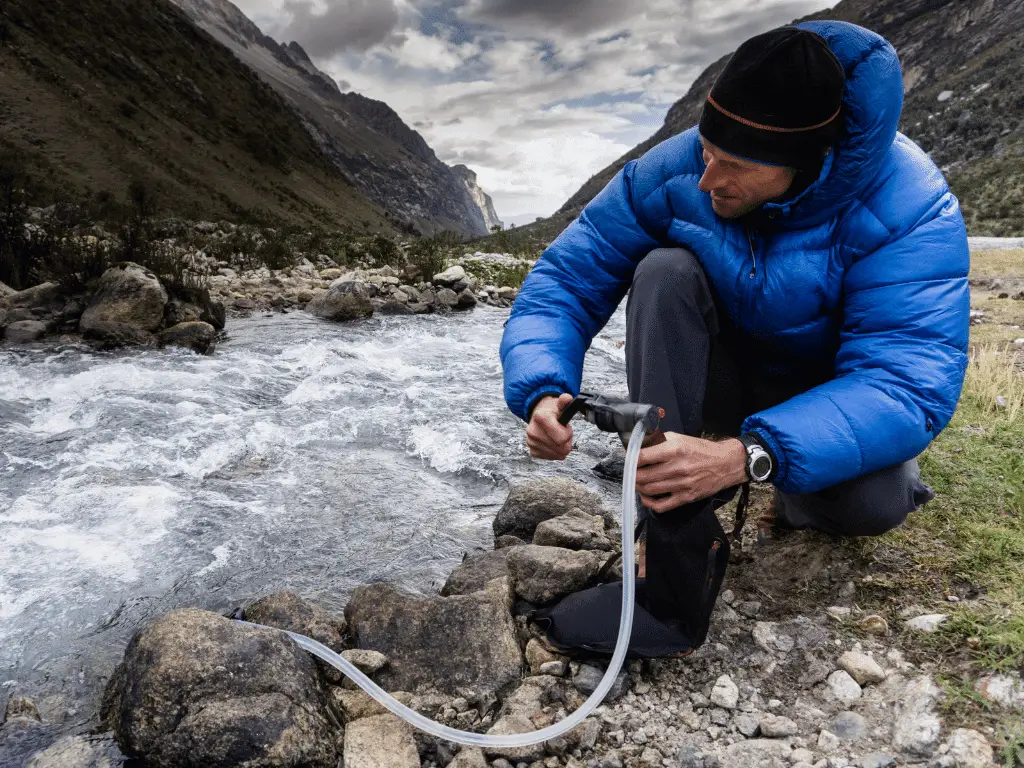
Are you getting ready for a long day hike or a multi-day hike? You might be more interested in filling water from nearby water sources since carrying that much water will be too heavy.
However, this option can be less safe and result in sickness if you don’t prepare well. Here’s the gear you need to make this option safe for you to use.
Water Filters
A water filter allows you to treat water to avoid having to worry about contaminated water. Good water filters will clean your water from fecal matter, some chemicals, and anything else that may be derived from livestock, wildlife, or humans.
There are many different water filters available now. For example, there are pump filters, gravity filters, UV filters, squeeze filters, bottle filters, and even straw filters.
Some of them perform better than others, depending on your needs. But, unfortunately, they also require you to bring another piece of gear.
Filtered Water Bottles
Filtered water bottles do the same thing that separate filters do, but right in the water bottle itself. It often means having a heavier water bottle. Even so, the convenience of having a water bottle that does the filtering work for you wins for many people.
The negative aspect of these is they often have a smaller carrying capacity due to the size of the filter. They will also be in a rigid water bottle, making them more challenging to pack and taking up quite a bit of space.
Purifying Tablets
Purifying tablets is the last option. You can easily carry these around and use them with whatever your preferred water carrier is. The tablets dissolve in the water and kill pathogens to make it safe for consumption. It might give the water an odd taste, but it does allow you to replenish your drinking supply as long as there is a nearby water source.
Not Carrying Water
Of course, there is always the option not to carry water. This option only works well if you know that there are pure water sources nearby and plenty of them. Depending on your route, this could work well for you.
Some examples in which not carrying water is an option are shorter hikes in National Parks. Check if they have water fountains anywhere close to the trailhead or where the Visitor Centers are. If you start, end, or pass one of these on your route, you might not need to carry water.
Other cases are when you hike in an area with plenty of safe water sources. For example, in Scotland, many of the water sources are drinkable. They are also abundant, giving you plenty of chances to fill up without getting dehydrated.
Tips on Carrying Less Water
You don’t always have to carry enough water for an entire trip. The general rule for how much water you should bring when you hike is to add 2 cups or ½ a liter for every hour you spend on a moderate hike.
There are ways you can limit this. For example, check along your route for water refill points. If you hike through any towns, villages, or around a city, you can use that opportunity to refill. That way, you only need to carry enough to get to your refill points.
The last option is to bring plenty of water-heavy foods. You can pack vegetables like cucumbers to stay hydrated and gain some nutritional value.
Best Way to Carry Water While Hiking – Final Thoughts
Dehydration can quickly sneak up on a hiker. Doctors say that once you feel thirsty, it is already too late. Bring plenty of water or have a water strategy for your hiking trip to stay safe. Staying hydrated will help maximize your enjoyment of the activity as well.
Like Our Article? Please Pin it!
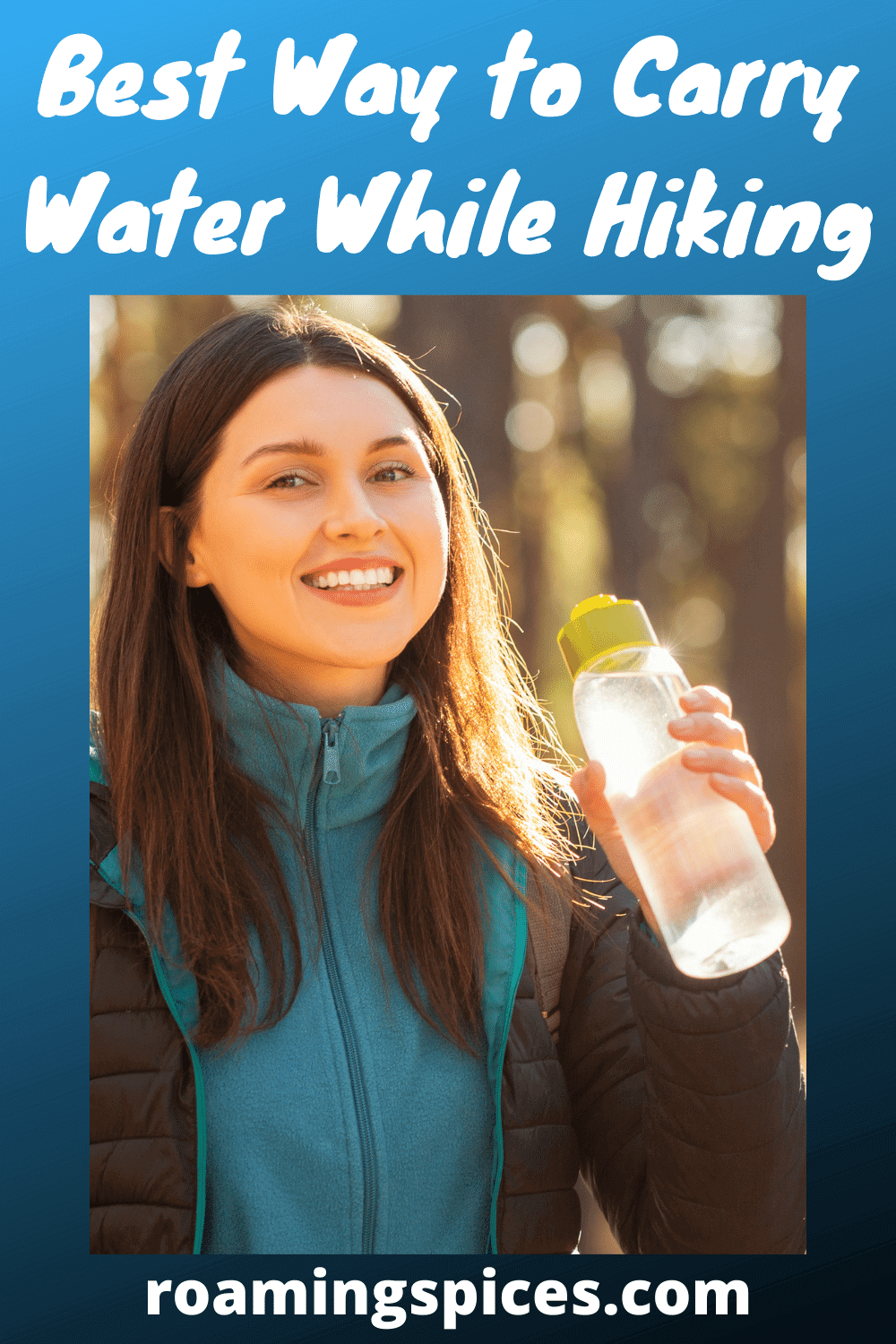

Leave a Reply